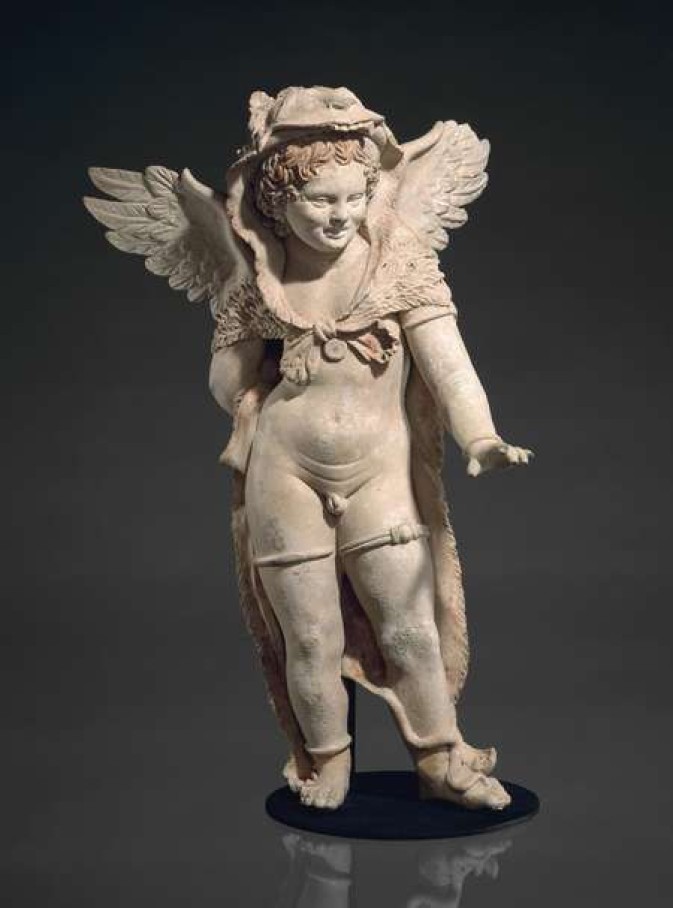Aphrodite and the Gods of Love Tours the U.S.
7 February 2012 - by ArtfixDaily Staff
Photograph: Eros Wearing a Lionskin, Greek, 100–1 B.C. Terracotta, pigment, and gold, 15 3/4 in. high. The Museum of Fine Arts, Boston. Henry Lillie Pierce Fund)
Aphrodite may be the best known of all the classical Greco-Roman goddesses, recognized for her beauty, and as symbol of love and lust. Her allure has been spoken of for centuries; the Aphrodite of Knidos sculpted by Praxiteles in the 4th century B.C. was the first life-size female nude, both shocking and titillating its contemporary viewers.
Currently on view at the Museum of Fine Arts, Boston is the exhibit, “Aphrodite and the Gods of Love,” surprisingly the first US exhibition devoted to the Goddess.
The exhibit features over 150 works from the MFA’s Greek and Roman collection, among the finest holdings in the United States, and includes 13 important loans. Among the loans is “Sleeping Hermaphrodite” who at first glance looks like a provocatively prone woman, but when viewed from the front reveals itself to have male genitalia; it has only left Italy one time previously.
The exhibit begins the Goddess’ birth near the island of Cyprus. For centuries, Aphrodite has been portrayed as rising fully formed out of the sea foam. This is in keeping with the myth that portrays Aphrodite as coming into being when Kronos, a Titan, castrated his father Ouranus---an act that Zeus would recreate with his own father Saturn. From the severed genitals of Kronus, subsequently flung into the sea, Aphrodite would emerge (her name even means “born from foam.”) Despite this inauspicious beginning, she was at once a beautiful and entrancing being.
Aphrodite was important to Greek women as she was seen as exerting influence over not only love, but marriage as well, ironic given Aphrodite’s own lack of concern over the sanctity of marriage. For men, she was viewed as a deity who could potentially aid virility and combat. This exhibit takes us though various incarnations of Aphrodite, as well her children, including the incorrigible Eros and lascivious Priapus.
“Aphrodite and the Gods of Love” is organized by the Museum of Fine Arts, Boston, in association with the J. Paul Getty Museum. When the exhibit closes at the MFA on February 20, it will make its way to the Getty Villa in Malibu, California where it will be in view from March 28 to July 9. After that it will go to be displayed in New Mexico at the San Antonio Museum of Art from September 15, 2012 to February 17, 2013 and then at the Philbrook Museum of Art in Tulsa, OK from March 10 to May 26, 2013.
